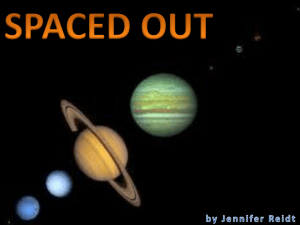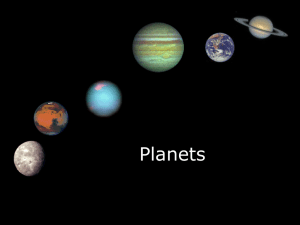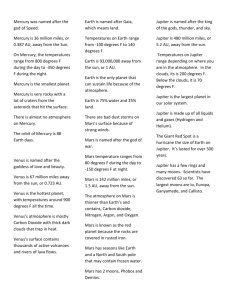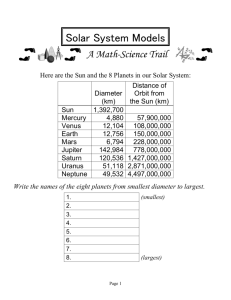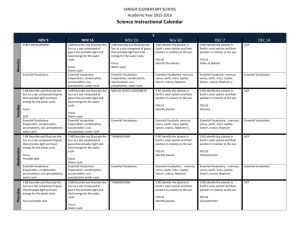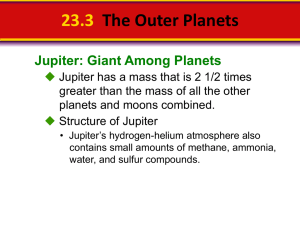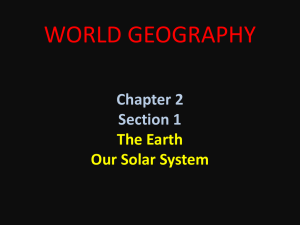CarolinesESLStrategy
advertisement
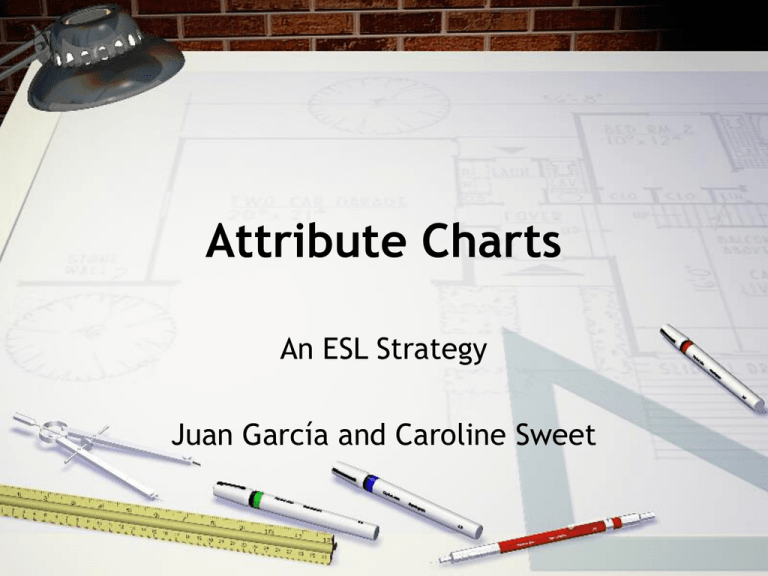
Attribute Charts An ESL Strategy Juan García and Caroline Sweet What is it? • Is a means of organizing material visually in order for students to understand the attributes of a topic being studied. • It is a strategy that supports second language learners because it gives them a clear understanding of the topic. How does it support ELLs? • Clearly visualizes their understanding of the main attributes of the topic • Helps them compare and contrast concepts • Builds prior knowledge Comparing and Contrasting • As the students compare and contrast particular attributes, they are able to visualize the global view of the lesson by interacting with a chart they have designed. Building Prior Knowledge • Prior to utilizing an attribute chart, the teacher must determine the topic and decide if it lends itself to charting. • If so, the students must be involved in a discussion of traits and attributes and understand that charting them will enhance their knowledge base. • Following the discussion, the teacher must aid the students in determining a marking process, i.e., a checkmark, minus sign, or a plus sign. TESOL Standards Goal 2: To use English to achieve academically in all content areas • Standard 1: Students will use English to interact in the classroom. • Standard 2: Students will use English to obtain, process, construct, and provide subject-matter information in spoken and written form. • Standard 3: Students will use appropriate learning strategies to construct and apply academic knowledge. Step #1 Choose a concept to Chart • Determine whether the concept lends itself to the charting of attributes. Make a list of attributes, traits, or characteristics that could be charted. Hey kids! Let’s learn about planets! QuickTime™ and a decompressor are needed to see this picture. Step #2 Discuss Attributes or Traits • Involve students in discussion. • Provide clear instructions. • Encourage them to contribute to the completion of the AC by examining the examples to see which attributes are present. • Distribute how to use a marking system for the task. Planets Name Mercury Venus Earth Mars Jupiter Saturn Uranus Neptune Planets Name Mercury Venus Earth Mars Jupiter Saturn Uranus Neptune Bigger or smaller than Earth Atmosphere Moons Evidence of water Step #3 Explore the Materials • Engage the students in the exploration of resource materials available to support their understanding of the attributes marked. • Give Ss multiple opportunities to view realia or photographs to assure understanding of the concept and its attributes. • Model the use of academic language being learned and help students make connections between the academic, their background language, and the BICS. Planets Name Mercury Venus Earth Mars Jupiter Saturn Uranus Neptune Bigger or smaller than Earth Atmosphere Moons Evidence of water Planets Name Bigger or smaller than Earth Atmosphere Moons Evidence of water Mercury - ? Venus Earth Mars Jupiter Saturn Uranus Neptune Planets Name Mercury Venus Earth Mars Jupiter Saturn Uranus Neptune Bigger or smaller than Earth - Atmosphere Moons Evidence of water ? Planets Atmosphere Moons Evidence of water ? Venus - Earth N/A (1) Name Mercury Mars Jupiter Saturn Uranus Neptune Bigger or smaller than Earth Planets Atmosphere Moons Evidence of water ? Venus - Earth N/A (1) Mars - (2) Name Mercury Jupiter Saturn Uranus Neptune Bigger or smaller than Earth Planets Atmosphere Moons Evidence of water ? Venus - Earth N/A (1) Mars + (2) (16) Name Mercury Jupiter Saturn Uranus Neptune Bigger or smaller than Earth Planets Atmosphere Moons Evidence of water ? Venus - Earth N/A (1) Mars + + (2) (16) (18) Name Mercury Jupiter Saturn Uranus Neptune Bigger or smaller than Earth Planets Atmosphere Moons Evidence of water ? Venus - Earth N/A (1) Mars + + + (2) (16) (18) (15) ? Name Mercury Jupiter Saturn Uranus Neptune Bigger or smaller than Earth Planets Atmosphere Moons Evidence of water ? Venus - Earth N/A (1) Mars + + + + (2) (16) (18) (15) ? (8) ? Name Mercury Jupiter Saturn Uranus Neptune Bigger or smaller than Earth Step #4 Use the Charted Material • Finally, the students must be engaged in a • follow-up activity where they apply what they have learned by comparing and contrasting the attributes. • Provide a follow up activity that encourages students to use the information on the chart. • Writing assignment – Compare and Contrast • Students label attributes of one of the examples from the chart. Conclusion • Teacher helps students visualize what is required of them. • During the process, Ss learn organizational strategies that help them communicate what has been learned. • Strategy lessens their dependence on reading, writing, speaking, and listening. • Attribute charting may be used in any content area from kindergarten to high school level.
